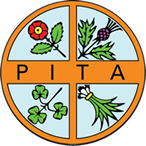Tesco has launched the second phase of its Remove, Reduce, Reuse & Recycle plan, which sets out four steps that will govern packaging design across all product categories:
- Remove all non-recyclable and hard to recycle material
- Where we can’t remove, reduce it to an absolute minimum, including excess packaging
- Explore new opportunities to reuse it, and if we can’t
- Ensure it is all recycled as part of a closed loop.
Since announcing its ambition in 2018 to remove hard-to-recycle materials, Tesco will have eliminated the hardest to recycle materials from own brand products by the end of 2019, by removing over 4,000 tonnes of materials from 8,000 lines. The company is now working with branded suppliers to do the same.
At four meetings with over 1,500 suppliers, Tesco set out its vision for the next stage of its packaging agenda. The retailer is committed to removing excess packaging from Tesco brand and branded products. Tesco also briefed suppliers that from next year, the size and suitability of packaging will be assessed as part of category reviews and ranging decisions.
Dave Lewis, Tesco Group CEO, said: “In the first quarter of 2018 we audited all packaging materials in our business and set ourselves a challenge to remove all hard to recycle material by 2019; we’re on track for Tesco own brand and we’re working with branded suppliers to deliver the same. Now we’re taking the next step and tackling excess packaging. From next year, we will assess packaging as part of our ranging decisions, and if it’s excessive or inappropriate, we reserve the right not to list it. Through the lens of Remove, Reduce, Reuse & Recycle we can transform our approach to packaging.”
Information shared at the supplier meetings included a case study from a branded crisp manufacturer showing the benefits of tackling excess packaging. By reducing the size of packaging on multi-buy crisps by 23%, the manufacturer delivered a reduction of 5,000 tonnes in packaging weight and 50,000 less road miles as pallets were packed more efficiently, reducing the number of lorry journeys.
Tesco also reiterated its call for the government to introduce a national collection and recycling infrastructure to deliver a closed loop for packaging.
Dave Lewis said: “Without a national infrastructure, industry efforts to improve the recyclability of materials used in packaging will be a drop in the ocean. In January 2018, we called on the Government to introduce this infrastructure and offered to help, including giving space in our car parks for recycling and testing the collection of materials not currently recycled by local councils. That invitation stands and the need for action has never been more pressing”
Read more in this blog from Dave Lewis about Tesco's commitment to remove, reduce, re-use and recycle to close the loop on plastic.
Hard to recycle materials
Tesco has been tracking the materials used in our packaging for many years and has already achieved a 31% reduction in packaging weight per unit sold since 2007.
In 2018, Tesco published a preferred materials list which categorised materials as ‘red, amber or green’ based on how easily recycled they are and committed to removing the hardest to recycle materials, ‘reds’, from Tesco brand packaging by the end of 2019.
Tesco has also committed to publishing an update on the ‘amber’ list in January 2019 which could see more materials removed from the business unless new ways of recycling are proven effective.
Tesco packaging strategy
In 2018, Tesco set out three strategic priorities to help reduce packaging waste and boost recycling across the UK. Click here for more details.
